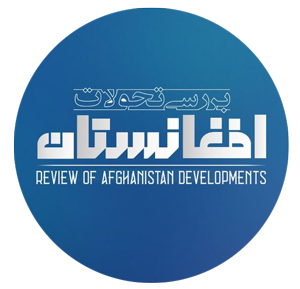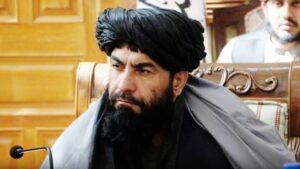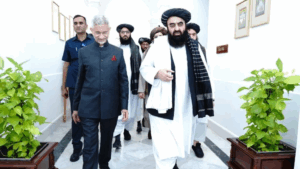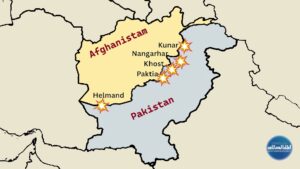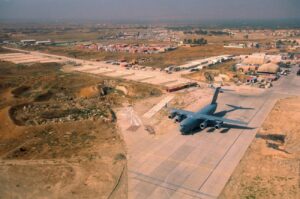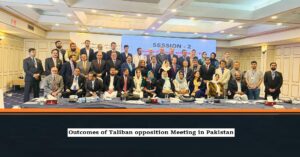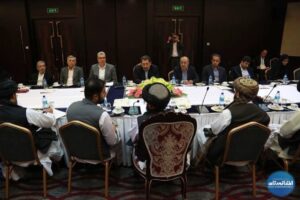Review of Afghanistan developments
With Donald Trump’s return to power, notable shifts are evident in the US government’s approach to Taliban and Afghanistan, contrasting sharply with the presidency of Joe Biden. Since the onset of Donald Trump’s administration, profound contradictions have emerged in the actions and remarks of American officials regarding Afghanistan and the Taliban government, resulting in varied interpretations.
Among the various actions and remarks that exerted pressure on the Taliban government was the cessation of US financial assistance to Afghanistan. The aid, amounting to $40 million weekly, was crucial for supporting international relief organizations and ensuring liquidity within Afghanistan. Officials from the Trump administration have consistently highlighted the necessity of retrieving weapons and military assets that were abandoned in Afghanistan, with the repatriation of 7 Black Hawk helicopters from Uzbekistan representing a notable advancement in this effort. These seven helicopters were part of a total of 46 former Afghan army aircraft and helicopters that were relocated to Tashkent during the exodus of former military personnel and officials. Additionally, there is a focus on the importance of the US reestablishing a presence at the Bagram base, which has also been the subject of speculation.
In contrast to these pressure-based actions, direct engagement by the United States with the Taliban government represented a contradictory behavior that had been prohibited under Biden. The visit of the American delegation, led by Adam Buehler, the US President’s Special Representative for Hostage Affairs, along with Zalmay Khalilzad, and their discussions in Kabul with officials of the Taliban government marked a new development that occurred following Trump’s ascension to power.
The prevalence of superficial analyses
These contradictory events have resulted in the emergence of two distinct types of analysis, primarily political in nature, which highlight specific aspects of the facts. Derived from two viewpoints, one viewpoint underscores the Trump administration’s implementation of a stringent policy towards the Taliban government. Advocates of this viewpoint reference the Taliban government’s harsh regulations concerning women’s and girls’ education, along with Afghanistan’s growing ties with China, Russia, and Iran as supporting evidence. Conversely, the opposing viewpoint focuses on the potential for the US to re-engage with Afghanistan, including the reopening of the embassy and the possibility of reclaiming the Bagram military base. Proponents of this perspective argue that the Taliban government requires international recognition, which is contingent upon the US, the lifting of the bounty placed on Sirajuddin Haqqani, and the ongoing economic crisis in Afghanistan as their analytical basis. Both viewpoints exhibit a degree of exaggeration in their analyses, driven by their respective political objectives.
Reasons for rejecting political analysis
It must be noted that there is presently a lack of sufficient evidence to justify a stringent approach by the Trump administration. Conversely, there are no definitive indications of a US re-engagement in Afghanistan, whether politically or militarily. The policies of the Trump administration since it assumed office have demonstrated that, similar to prior US administrations, the current administration is reluctant to invest time and resources in human rights matters. The US’s indifference towards the evident human rights abuses occurring in Syria under Ahmad al-Sharaa’s regime, along with the elimination of the role of US Special Representative for Afghan Women and Girls, serve as clear illustrations of this stance.
- Concerning Afghanistan’s engagement with America’s three adversaries—China, Russia, and Iran—it is important to note that if this engagement held significant value for the United States, Washington would not have exited Afghanistan. This perspective was equally applicable during the Republican administration, where Republican officials, alongside their justifications for a sustained American presence in Afghanistan, contended that Afghanistan’s geostrategic position in South Asia, Central Asia, and the Middle East rendered it a crucial area that the United States could not overlook. Nevertheless, the withdrawal of American forces from Afghanistan has demonstrated that this belief was misguided. While Trump mentions the strategic significance of Bagram and its closeness to China in his remarks, such statements lack professionalism and carry a political undertone, thus failing to serve as a credible justification for re-engaging in Afghanistan.

Concerning the United States’ return to Afghanistan, it is important to note that while the Taliban government favors a civilian and non-intrusive US involvement in Afghanistan’s domestic matters, as this could potentially lead to a resolution regarding the identification of solutions and the release of Afghanistan’s frozen assets, the US does not share this inclination for several reasons. The primary reason is that Afghanistan has ceased to be a priority for the White House. The US invasion of Afghanistan in 2001 was driven by the events following September 11 and was part of a counter-terrorism strategy that has since been taken off the table. Currently, Afghanistan holds no strategic value in the US’s overarching strategy, which focuses on competition with rival powers such as China and Russia. This strategy emphasizes ‘competition’ rather than warfare and the deployment of military force.
On the other hand, the United States’ involvement in Afghanistan under the present conditions will once more entangle Washington in the nation’s internal issues and disputes, which contradicts Trump’s mindset. In these circumstances, even Afghanistan’s untouched mineral resources and rare minerals, obscured by domestic difficulties, fail to convince officials at the White House to re-engage in Afghanistan.
Possible US agenda in the short term
At present, there are two significant concerns regarding Afghanistan that are crucial to Washington: firstly, the citizens of the United States who are detained in Afghanistan, and secondly, the security risks that arise from Afghanistan which pose a threat to US national interests. In light of these two matters, the United States has implemented a form of “security-focused engagement” with the Taliban administration.
The release of American citizens holds significant importance for the Trump administration, prompting the appointment of a special representative to address this matter. The American delegation’s visit to Afghanistan, led by this special representative, focused on securing the release of hostages, which achieved a degree of success. Despite some speculation regarding the potential expansion of these negotiations to encompass other topics, such as the United States’ return to Afghanistan, analytical assessments suggest that these speculations are likely unfounded. This is particularly true given that the Taliban government has explicitly and publicly dismissed the transfer of the Bagram base. Consequently, the matter of imprisoned American citizens represents a facet of the US’s “security-oriented engagement” with the Taliban government.
The second concern, specifically security threats originating from Afghanistan, is a significant factor in the decision to implement a policy of “security-oriented engagement” with the Taliban government. Washington engages with the Taliban in efforts to combat terrorism as outlined in the Doha Agreement. According to this agreement, meetings between representatives from both parties have taken place sporadically in Arab nations. Despite the outcry from Taliban adversaries and their associated media outlets that aim to amplify the perceived threats from Afghanistan, the assessment provided by the US intelligence community differs. In the latest report from the US intelligence community, the references to Afghanistan and the Taliban have been omitted from the list of threats. This suggests that the ongoing “security-oriented engagement” aimed at countering threats to US national interests, which has been in place for some time, continues under the Trump administration and is regarded as effective by the US intelligence community.
Related Articles:
The new role of ISIS Khorasan in the region
The effects of Iran-US negotiations on Afghanistan
Conclusion
Amid two contrasting political perspectives regarding the US government’s approach to Afghanistan and the Taliban regime—one advocating for confrontation and the other favoring the normalization of relations to the extent of reopening the US embassy in Kabul—the realistic perspective implies a moderate level. Accordingly, US policy in Afghanistan has transitioned from state-nation building to a focus on interest-based realism. This shift towards interest-based realism has fostered a degree of pragmatism in the foreign policy of the Trump administration, which can be characterized as “security-based engagement.”
At present, there is no possibility of advancing this “security-oriented engagement” to a higher level, as neither the White House is pursuing it, nor do the circumstances in Afghanistan and the Taliban government support such an initiative.
